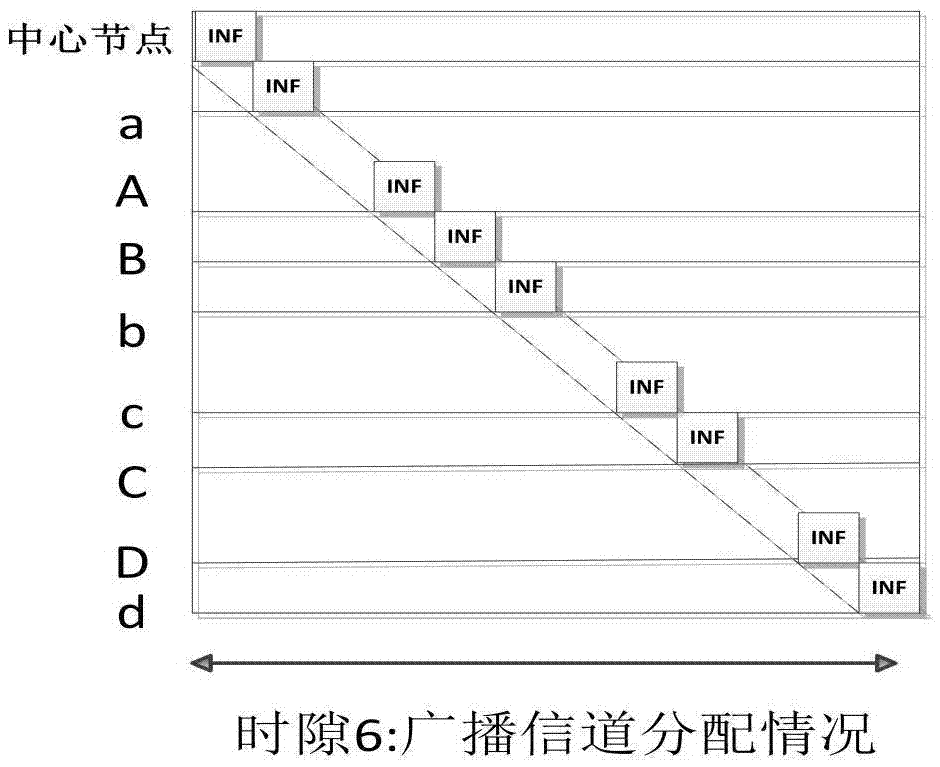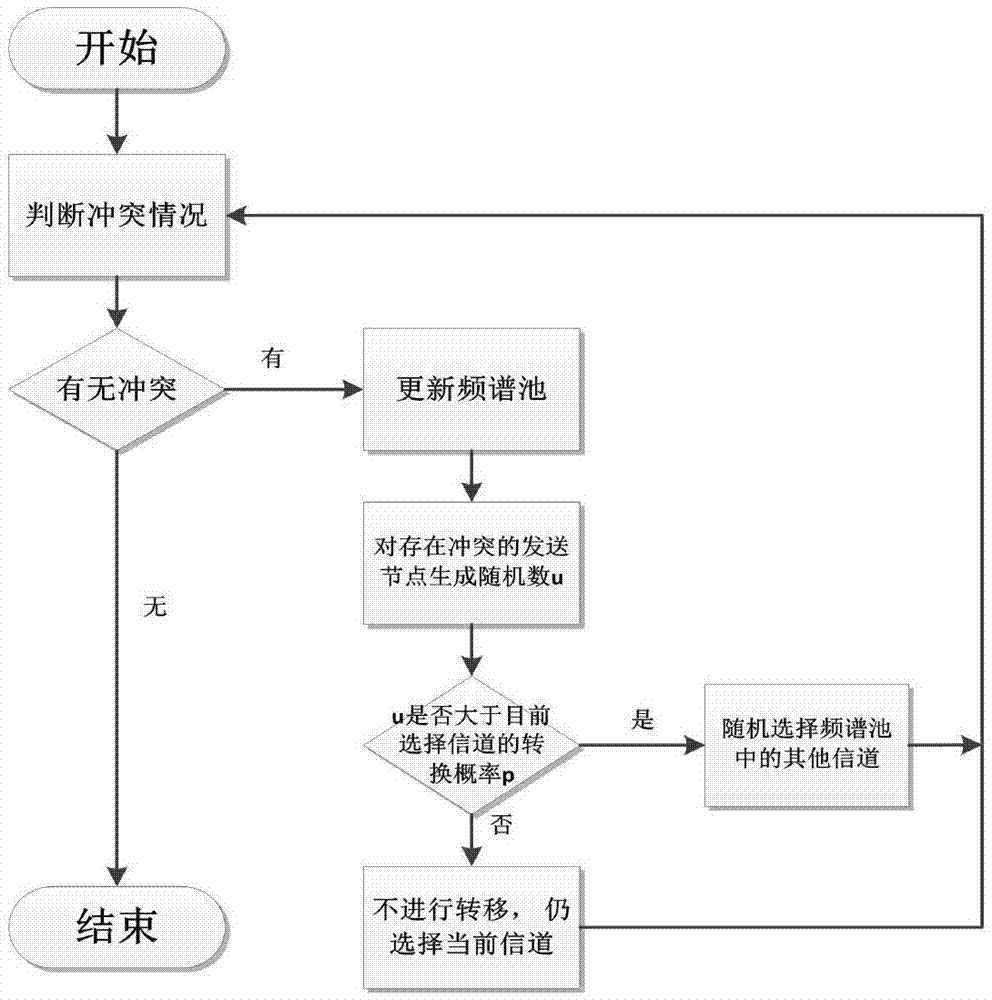Centralized spectrum allocation method in underwater sensor network
An underwater sensor and spectrum allocation technology, applied in the field of spectrum allocation, can solve problems such as low network communication efficiency, achieve easy management and control, avoid data exchange, and improve performance
- Summary
- Abstract
- Description
- Claims
- Application Information
AI Technical Summary
Problems solved by technology
Method used
Image
Examples
Embodiment Construction
[0015] In an underwater sensor network with multiple channels, each transceiver node pair needs to select a channel and negotiate before sending data, so as to achieve conflict-free communication between each transceiver node pair. This process can be divided into two stages. In the first stage, each sending node sends its own channel selection information to the central node, such as figure 1 In the second stage, the central node judges whether there is a conflict according to the channel selection information, and re-allocates the channel for the conflicting node, and broadcasts the final allocation result without conflict to all the sending and receiving nodes. figure 2 shown. These two stages are now described in detail.
[0016] The first stage: Each pair of sending and receiving nodes selects the channel they use, and notifies the central node. This work is mainly performed by the sending node in each pair of sending and receiving nodes. The sending node selects a ch...
PUM
 Login to View More
Login to View More Abstract
Description
Claims
Application Information
 Login to View More
Login to View More - R&D
- Intellectual Property
- Life Sciences
- Materials
- Tech Scout
- Unparalleled Data Quality
- Higher Quality Content
- 60% Fewer Hallucinations
Browse by: Latest US Patents, China's latest patents, Technical Efficacy Thesaurus, Application Domain, Technology Topic, Popular Technical Reports.
© 2025 PatSnap. All rights reserved.Legal|Privacy policy|Modern Slavery Act Transparency Statement|Sitemap|About US| Contact US: help@patsnap.com



